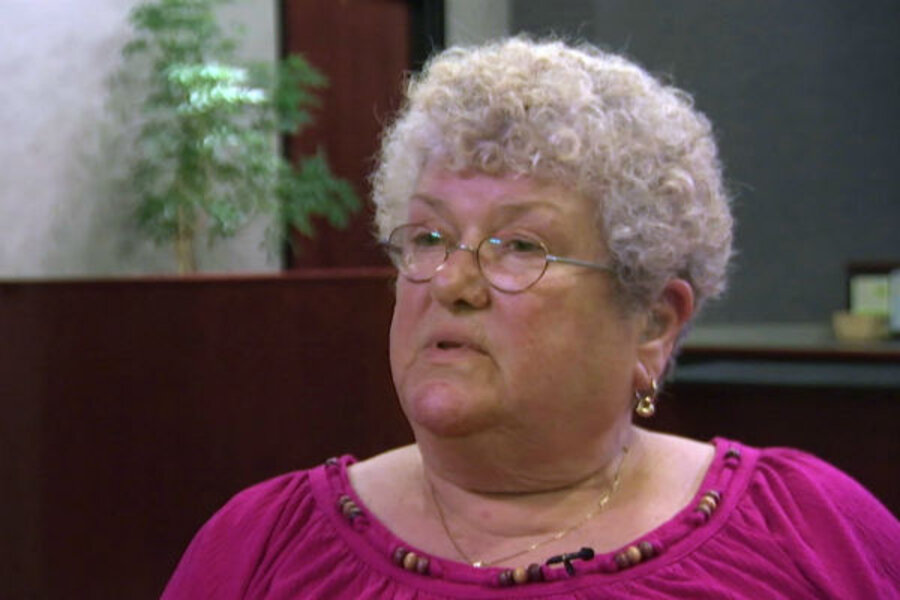Bullied bus monitor: Karen Klein case shows power of crowdfunding
Loading...
The horror of ruthless bullying reduced a 68-year-old bus monitor in upstate New York to tears and made the video of her torment viral on the Internet. It may also have been a tipping point for the growing phenomenon known as crowdfunding.
The plight of Karen Klein, the bus monitor in Greece, N.Y. who was shown crying as some middle schoolers taunted her mercilessly, shocked millions of viewers who saw the video after it was posted on YouTube Tuesday, and prompted a Canadian man to turn to the crowdfunding website IndieGoGo.
"As soon as I heard of Karen Huff Klein I had to create a fundraiser here for this nice lady,” Max Sidorov wrote on the fundraising page he set up for Ms. Klein. “Let’s give Karen a vacation of a lifetime, let’s show her the power of the internets and how kind and generous people can be.”
Mr. Sidorov, who reportedly lives in Ontario, could not be immediately reached for further comment.
The result was an unprecedented deluge of money from people mainly appalled by the students’ bullying. As of Friday, the campaign had raised nearly $600,000, and the crush of interest from around the world had slowed down the website to the point that it had appeared the servers had crashed. IndieGoGo says never had one of its causes raised so much money in such a short time.
“The world has never seen such a convergence of social media, communication, transparency, and connection. That’s what crowdfunding is,” says Slava Rubin, a co-founder of the San Francisco-based company. “What has happened in the 48 hours is absolutely remarkable.”
The concept of crowdfunding is a close cousin to the better-known term crowdsourcing: tapping into a mass of knowledge by using the Internet to find users of, say, Facebook or Yelp or Cats.com. From there, it’s a small evolution to using the Internet to garner money from farflung individuals, something that only really became possible with technology in the late 1990s to facilitate business transactions and to transfer money easily and safely, with websites like PayPal and Amazon and eBay.
In the past half-decade, the idea of using the Internet and crowds of otherwise unconnected people to raise money has steadily gained traction. Musicians, writers, and filmmakers use crowdfunding to persuade people to chip in a few dollars here and there to record albums, write books, or make films. Philanthropists have used the concept to generate interest and funding for orphans in third-world countries. Entrepreneurs have used it to raise money for new devices or video games. One couple used IndieGoGo to raise money for a medical procedure to help them get pregnant.
Websites have since sprouted like mushrooms across the Internet, with hundreds of new sites seeking to connect donors and philanthropists, investors and companies, or music lovers and musicians. IndieGoGo and its competitor KickStarter remain among the largest and most publicized endeavors. Underscoring the growth in investor interest in the crowdfunding industry, IndieGogo earlier this month received a $15 million injection of venture capital, the largest single investment in a crowdfunding enterprise.
IndieGoGo says it has hosted more than 100,000 campaigns, in one of 28 categories ranging from “transmedia” and “theater” to “food” and “animals.”
“It may herald, be a mark of a coming change in how we go about philanthrophy. It’s a new model,” says Michael Nilsen, spokesman for the Association of Fundraising Professionals, a Virginia-based group that represents development officers and philanthrophy officials mainly in the US. “People want to get involved and if we’re not giving them that, we’re ultimately going to miss out as we transition from traditional donors to younger donors. It’s not enough to just write a check anymore.”
While “cause-related” or “donation” campaigns like that for Karen Klein have received much publicity, another development earlier this year stands to yield a further explosion in interest in crowdfunding. Legislation signed into law by President Obama in April included a provision that allows small start-ups to seek out equity investment using crowdfunding.
Some see the extension of crowdfunding into equity investing as a natural progression. Others, however, say the potential for financial fraud and chicanery makes it ill-advised.
“For its part, donation crowdfunding works precisely because the donor doesn't really care much about getting a product or making personal gain: most of the donors immediately write off their donation – either financially or psychologically, or both. Expectations of return are minimal at best,” wrote Daniel Isenberg, a business professor with Babson College in Wellesley, Mass., in a recent edition of the Harvard Business Review.
“Buying stock is a very different story. It’s a claim or asset forever. That’s a very different relationship,” he says.





